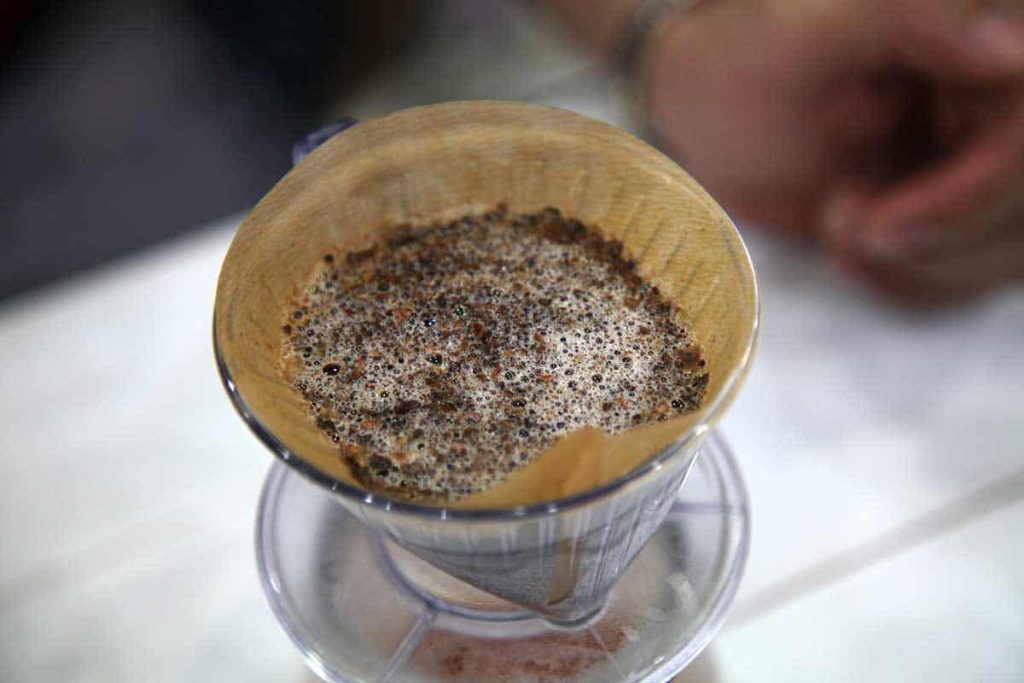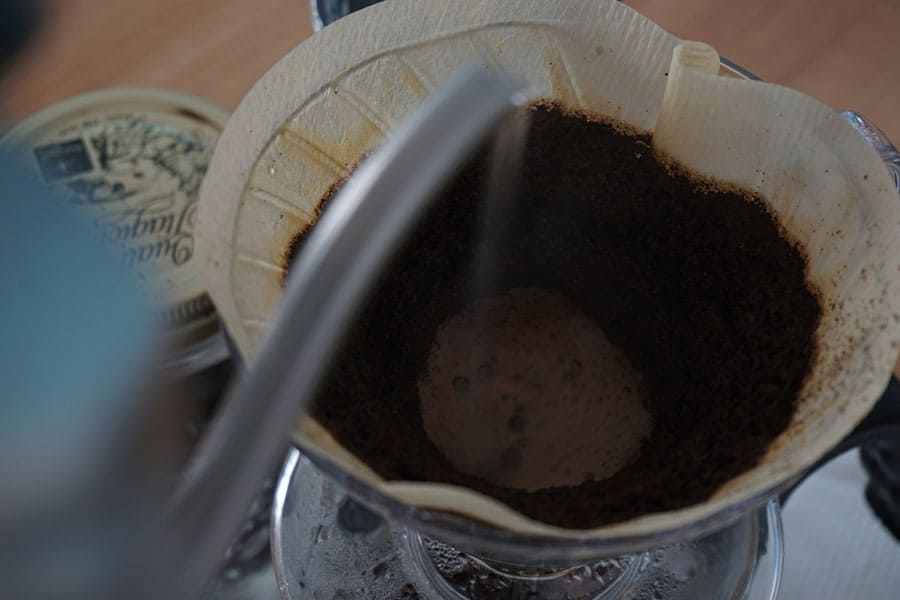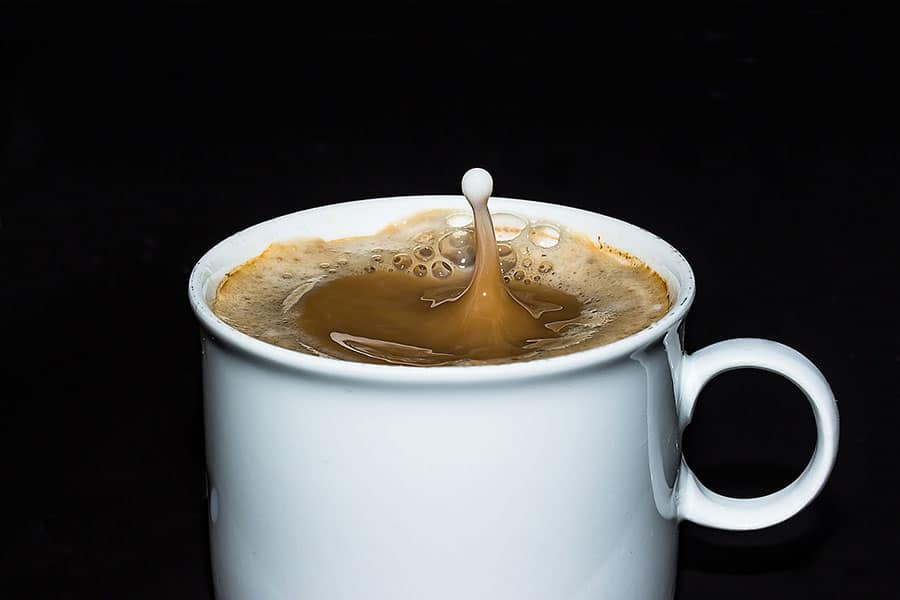How to Make Drip Coffee: The Perfectly Brewed Cup

Coffee made from a regular drip coffee maker usually gets a bad rap. People see it as a fairly average coffee without much flavor. However, with a bit of finesse and some helpful tips, you can learn how to make drip coffee bursting with bold, rich flavor with this affordable brew method.
You may not be a professional barista, but you can still enjoy a perfect drip coffee in the comfort of your home.
Before you even glance at your drip machine, you should be focused on freshly grinding up your premium coffee beans at home. If you have been using pre-ground coffee beans, now is the time to switch things up and discover the difference fresh-ground beans make in the quality of your brew. You can choose one of the top burr grinders to ensure you grind your beans consistently to produce optimal flavors.
Let’s get started and cover the ins and outs of how to brew perfect drip coffee.
Before You Brew
Before we get to the actual process of making drip coffee, there are a few things you should know to produce a quality cup of coffee using a standard drip maker. These few tweaks will help elevate your coffee to a higher standard.
Coffee Bean Choice
Purchasing premium whole coffee beans ensures that your cup of coffee tastes good. If you are using average-tasting coffee beans, your coffee will also taste average. Since not all coffee beans are made equal, choose carefully when selecting your stock of beans.
When you look at coffee on the shelf of a store or online, you will notice there are two common types of beans. These two types are Arabica and Robusta beans, with some coffee bags consisting of a blend of the two.
Arabica coffee is the premium choice and will provide you with bold and complex flavors, giving your coffee a delicious taste. Robusta beans, on the other hand, are usually cheaper and lower quality, with some consisting of flat flavors.
Certain coffee blends contain Robusta beans to add bulk to the bag, which reduces the quality of the coffee.
If you are unhappy with your regular beans, you should choose beans that will improve the taste of your coffee. The best choice is to select a single-origin bag of Arabica beans. Choose a roast level in line with your individual taste preferences.
The drip maker is a good tool to highlight the subtle and complex flavors of coffee, so a light or medium roast will work well. However, if you prefer bolder coffee, you can go with a dark roast.
The Pre-Grind Before the Brew
True coffee connoisseurs will tell you how important grinding your own beans at home is to ensure the coffee is at its optimal freshness. While this is the main reason for grinding your beans, it is not the only reason.
Grinding whole coffee beans at home gives you complete control over the grind, which will help you prepare your beans in a way that helps release the full flavors. Freshness is paramount here, as coffee beans begin losing their flavor once they are ground.
This means you should grind the beans immediately before you begin brewing to really get the most flavor.
Another reason to do this step at home is to give you more control over the grind size and consistency.
Store-bought, pre-ground coffee doesn’t usually indicate which method was used to grind the beans. If the beans were ground using an average blade grinder, the grounds might be uneven and inconsistent, drastically reducing the quality of your coffee.
Uneven grinds can give your coffee a bitter or sour taste as the coffee will be extracted at different rates from various bean sizes. This leads to over- and under-extraction and an awful-tasting brew.
Controlling the grind size also allows you to grind to a perfect coarse to medium grind size, which works well for this coffee maker. Once you have finished grinding just enough beans (try the 1:17 ratio), it’s time to learn how to make a cup of drip coffee.

How to Make Drip Coffee: Follow These Steps
When using a drip coffee maker, you won’t have too much control over the brew time and water temperature, so it is even more essential to control the bean type and grind consistency to improve the taste of the coffee.
In addition, you should take care when measuring out your water to find the perfect balance between water and coffee. These three elements will have your friends and family wondering what the secret is to making drip coffee as well as you do.
Here is how to make the best coffee using this brew method.
Step 1: Clean Your Machine
Start by making sure your machine is clean. If it is the first time brewing coffee with your machine, then you will need to clean the entire machine out with soap and water.
Alternatively, you can run a mixture of one part vinegar to two parts water through the machine. Repeat this twice before running plain water through the machine to properly clean it out. If you are regularly using your machine, you should do this deep-clean once a month.
Step 2: Prepare Your Machine and Filters
If your machine is already clean, heat your coffee pot by pouring in some filtered water while it heats up. Throw out this water before you begin brewing. This will heat the machine in preparation for the coffee. It will also keep your coffee at the right temperature when it filters into the pot.
While you heat the coffee pot, you can prepare your paper filter by rinsing it with some cool water. This step primes the filters and removes any papery taste. If you are using a built-in mesh filter, this step is not necessary.
Step 3: Measure Your Water
The prime ratio for this coffee brewing method is one to two tablespoons of ground coffee for every six ounces of water. If you prefer milder coffee, then go for one tablespoon; for a stronger cup of joe, opt for two.
Step 4: Add the Water and Grounds
Place your filter into the machine before adding the desired amount of coffee grounds. Then add enough filtered water to the reservoir of the machine.
Step 5: Turn the Machine On
Now simply turn the machine on, and give your coffee time to brew. The machine will take it from here. Once the brew cycle is complete, remove the coffee pot and pour your steaming cup of coffee.
At this point, it is important to manage the heat of the heating element below the pot. While this will keep the remaining coffee warm, it could also burn the coffee if it is too hot.
You can either remove the pot and keep your coffee in a thermal container or turn down the heat of the hot plate.

Drip Coffee FAQs
How much coffee do you put in a drip machine?
The amount of coffee you put in your machine will depend on how much coffee you would like to brew. You should make your coffee fresh rather than leaving excess coffee in the pot. The prime ratio is one or two tablespoons of coffee per six ounces of water. The exact amount will depend on how mild or strong you would like your coffee to be.
What is the perfect grind for a drip brew?
When preparing coffee in a drip machine, the best grind size is a medium to coarse grind. A grind closer to medium enables the coffee to fully extract with this brew method.
What is the difference between drip and pour-over coffee?
Some people may confuse a drip machine with a pour-over coffee. While these two brew methods are similar, they are not the same. A drip coffee uses an electric machine that automatically brews the coffee once you have added the coffee grounds and water.
A pour-over brew gives you a lot more control over the brewing as you manually pour heated water over ground coffee that is sitting in a filter. This method gives you control over the brew time and the water temperature but also requires more expertise to create a delicious cup of coffee.
The Final Drop
While this method might not make the list of the top brew methods, it can offer an affordable and easy home brewing method for new coffee lovers.
Before you get brewing, be sure to select the best coffee beans to make sure you are extracting optimal flavors from your beans. Remember to grind the beans right before brewing to a consistent medium to coarse grind.
Owen is a writer and editor at Caffe Streets who considers himself a coffee fanatic. He spends his time researching and testing different coffee beans and brewing methods and sharing what he learns with others.





